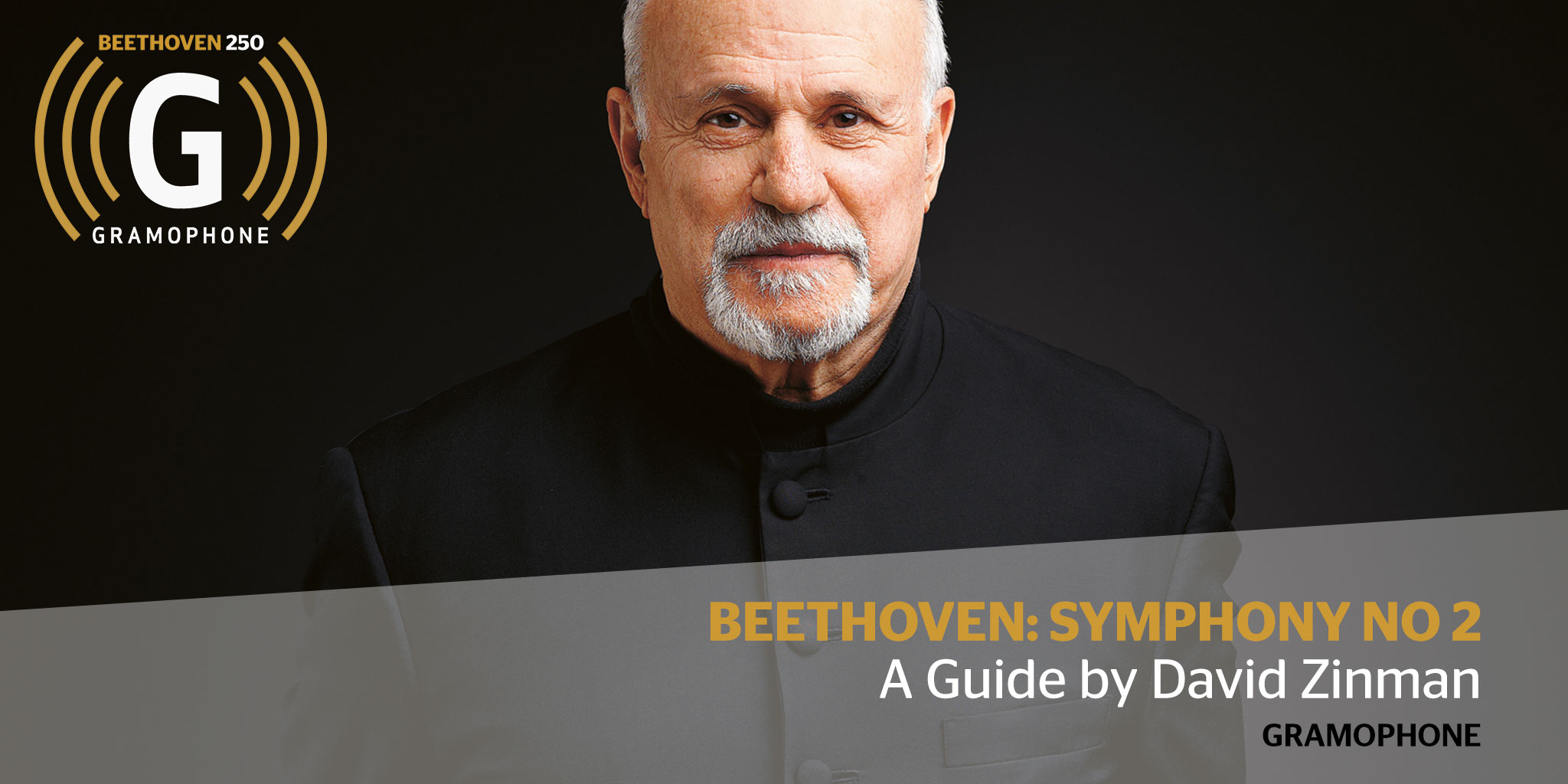Beethoven's Symphony No 2, introduced by David Zinman
Gramophone
Monday, September 22, 2014
Continuing our series of great Beethoven conductors introducing the nine symphonies is David Zinman on the Second...
The Second Symphony sets up some concepts the composer had already begun to think about in his early string quartets, in particular the Op 18 ones. His chamber music at this time – the piano sonatas, for instance, as well as the string quartets – was much more advanced than his symphonic work. He was breaking new ground all the time. This work is not as revolutionary as the Third Symphony, but it is nonetheless very far away from No 1. One of the strongest features is his repeated use of the rhythmic motif that opens the piece: ‘da daaaaah’ – a kind of Hauptstimme in rhythmic terms, an idea that makes pronounced reappearances in every movement of the work. This obsessive Doppelschlag idea runs through the piece and there are also a number of subito pianos and other sharp effects that must have been unfamiliar at the time. That doesn’t put it into the same class as the Eroica, which is much more about the composer’s inner life than this piece is.
The long first movement reminds us that composers are dealing more with compositional ideas – the sheer essentials of constructing a piece – than with emotional ones. This is a fabulous, Classical symphony and, I think, a brilliant, virtuoso piece – the kind of piece he had to write in order to move on. The use of development is quite extraordinary. It’s not a humorous piece in the Haydn sense, but there are certainly humorous effects, for instance in the Scherzo, which is a very unusual movement in all kinds of ways. It is a long piece, with a particularly long first movement, in which the use of the development section is very radical indeed.
This was one of the first Beethoven symphonies in which I tried to make the composer’s metronome markings work. The Allegro con brio in the first movement is marked 100, and people told me it wasn’t possible to play it that fast, but of course it is. The key is to think of the general pulse. If you get the big pulse right, the little pulses take care of themselves and the details really will come out. It’s all in the phrasing and the shaping. If you approach Beethoven’s metronome markings on the basis that he wrote in four, you will be running into a wall. It’s the tempos that make the piece work, that give it its character. The same is true of the quartets. If you change the tempos, you fundamentally change the character of the piece. If you respect Beethoven’s tempos, within a shade or two, you will capture the character of the piece correctly and its structure will also make sense.
I also like to use natural horns. There’s a wonderful section in this first movement where the horns have their own tune, sometimes open, sometimes closed. The effect is so striking, if you get it right.
The slow movement is really not slow at all. It’s more of a Haydnesque romanza. With its metronome marking of quaver at 92, this movement was played too slowly for years. It can be played almost as a minuet, but, once again, characteristically of Beethoven, it isn’t really a ‘slow’ movement, despite its Larghetto marking. The Scherzo, with a marking of 100, sounds perfect when played as Beethoven intended. The finale is certainly very fast (152 minims to the minute) and, again, people told me it would be technically impossible to honour the markings.
In both the first movement and the final movement, Beethoven saves his energy for the coda. The coda of the opening movement should be one of the most brilliant and energetic endings possible. The finale ends with virtuosic brilliance too. All the ammunition is stored up for this. As he grew older, Beethoven became angrier and more curmudgeonly, more absorbed with his inner life. This piece was completed at around the time he first admitted he was losing his hearing and he wrote his Heiligenstadt Testament, but I still feel it’s strongly connected to his early works. Music did change completely with his Third Symphony, which opened up a new world, but this piece represents a bridge, an essential, indispensable bridge between the two worlds. It is a beginning but also a continuation.
In a sense, each Beethoven symphony is a partial antidote to the one that went before. I think the Second is more connected to the Fourth and, in turn, to the Sixth and the Eighth. A similar connection exists between the Third, Fifth, Seventh and Ninth symphonies. The Second Symphony was criticised in Beethoven’s lifetime – perhaps its temper was a little bit too obsessive for the tastes of the time. This style of composition influenced Schumann far more than it did Schubert, and it was part and parcel of what Beethoven was and is. This is a far angrier work than the First Symphony had been. Each of his symphonies was a world in itself, but they should not be regarded in isolation: they are always related to the other stuff he was writing at the same time.
Interview by Michael McManus












